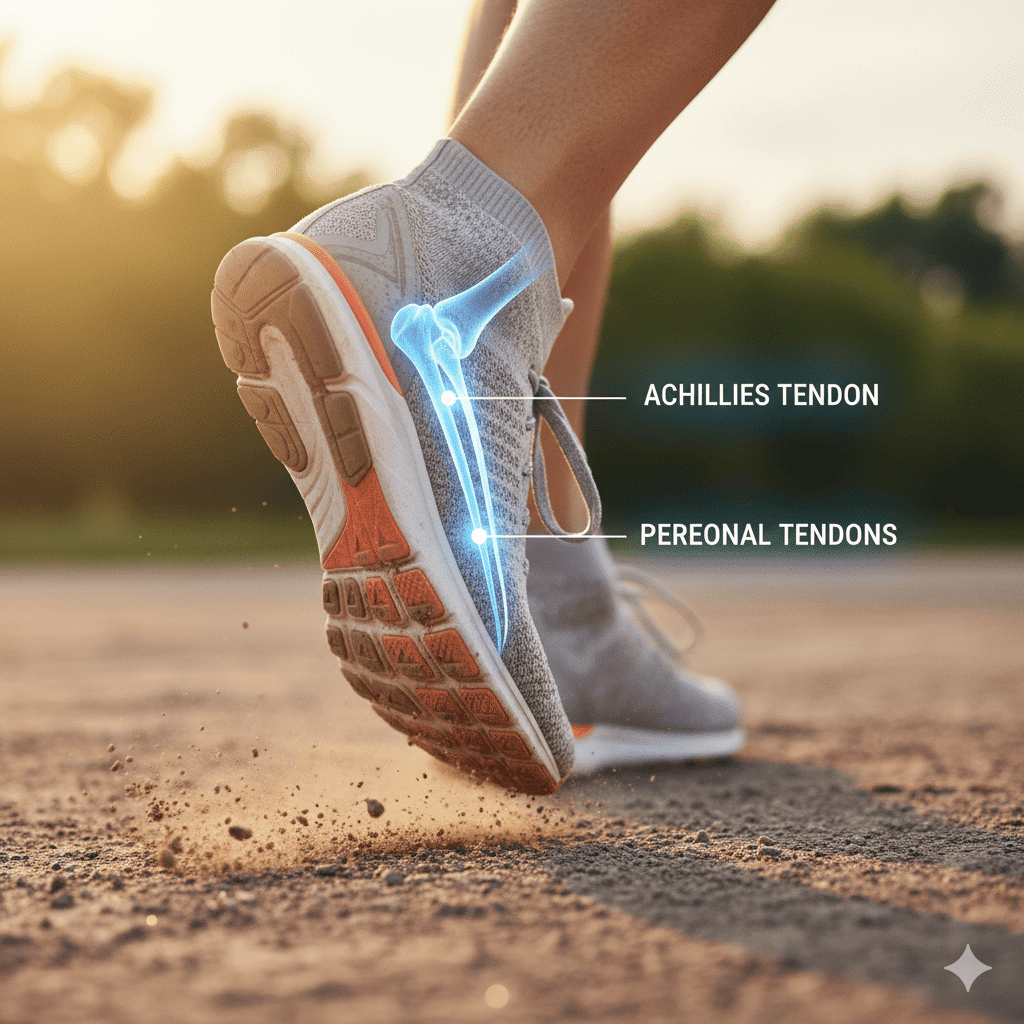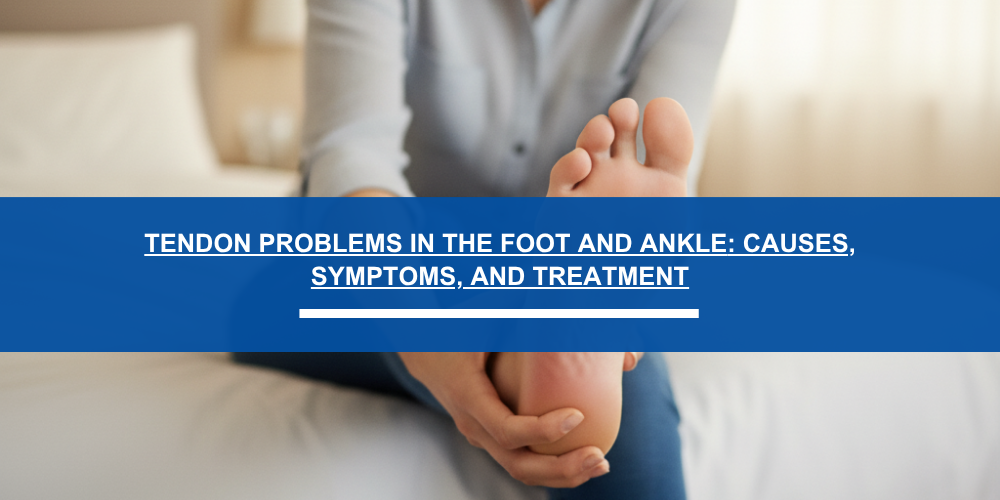Tendon Problems in the Foot and Ankle
That nagging ache in your heel or the sharp pain along your ankle can be more than just a minor annoyance. These are often signs of tendon problems, which can significantly impact your ability to walk, run, and enjoy daily activities. Your tendons are the tough, flexible bands that connect muscles to bones, and when they get irritated or injured, they make their presence known.
Understanding the cause of your discomfort is the first step toward effective treatment and preventing long-term complications. Let’s dive into the most common tendon issues we see.
Common Tendon Problems in the Foot and Ankle
While several tendons can be affected, a few are more prone to injury than others:
- Achilles Tendonitis: This is an inflammation of the body’s largest tendon, which connects your calf muscle to your heel. It’s a frequent complaint among runners and active individuals, causing pain at the back of the heel.
- Posterior Tibial Tendon Dysfunction (PTTD): This tendon is a primary supporter of your foot’s arch. When it weakens or becomes inflamed, it can lead to a painful condition often associated with adult-acquired flatfoot.
- Peroneal Tendon Injuries: Affecting the tendons that run along the outer side of your ankle, these injuries can cause pain and instability, often occurring after an ankle sprain or through overuse.

What Causes Tendon Problems to Develop?
Tendon injuries rarely happen for just one reason. They are often the result of a combination of factors, including:
- Overuse or repetitive stress: Doing too much, too soon is a classic trigger, whether it’s increasing your running mileage or starting a new workout routine.
- Trauma or sudden injuries: A misstep, a fall, or a direct blow can lead to acute tendon tears or inflammation.
- Aging and degeneration: As we age, our tendons naturally lose some of their elasticity, making them more susceptible to injury.
- Biomechanical imbalances: Issues like flat feet or high arches can put uneven stress on your tendons, leading to irritation over time.
Symptoms: What to Look For
Tendon injuries can present in several ways. Be on the lookout for these common signs:
- Pain that develops along the path of a tendon, which may be sharp during activity or a dull ache afterward.
- Swelling or tenderness when you press on the affected area.
- Stiffness in the foot or ankle, especially in the morning or after periods of rest.
- A popping or snapping sensation in some cases, which could indicate a tear or dislocation.
Your Path to Recovery: Effective Treatment Options
The goal of treatment is to relieve pain and restore function. At City Orthopaedics & Sports Medicine, we tailor a plan to your specific injury, starting with conservative methods.
Initial Care and Non-Surgical Treatments:
- Rest and Activity Modification: The first step is often to take a break from the activities that are causing pain.
- Ice and Anti-Inflammatory Medication: These can help reduce swelling and alleviate discomfort in the early stages.
- Physical Therapy: A structured program of stretching and strengthening exercises is crucial for healing the tendon and preventing recurrence.
Advanced and Surgical Care:
For severe injuries, like a complete tendon rupture, or chronic issues that don’t respond to conservative care, surgery may be necessary to repair the damaged tendon.

Prevention: How to Protect Your Tendons
You can take proactive steps to reduce your risk of developing tendon injuries:
- Wear supportive, well-fitted shoes that are appropriate for your activities.
- Avoid sudden increases in the intensity or duration of your exercise. Gradual progression is key.
- Stretch and strengthen the muscles in your lower legs and feet regularly.
- Address foot mechanics with orthotics if you have flat feet or other imbalances.
Don’t Ignore Persistent Tendon Pain
Ignoring the warning signs can lead to chronic issues and more significant damage. Effective management of tendon problems starts with a professional evaluation to pinpoint the cause of your pain.
If you’re ready to get back on your feet without pain, schedule a consultation with the specialists at City Orthopaedics & Sports Medicine. Book your appointment today!
Frequently Asked Questions (FAQs)
1. What is the difference between tendonitis and a tendon tear?
Tendonitis is the inflammation or irritation of a tendon, often from overuse. A tendon tear is a physical rip in the tendon fibers, which can be partial or a complete rupture, and is usually caused by a sudden injury or chronic degeneration.
2. Is it okay to ‘push through the pain’ with a tendon injury?
No. Pain is your body’s signal that something is wrong. Continuing to stress an injured tendon can worsen the condition, turning a minor issue into a chronic one or causing a complete rupture.
3. How long does it take for tendonitis to heal?
Recovery time varies widely based on severity and treatment. Mild cases may improve in a few weeks with rest and physical therapy, while more severe or chronic cases can take several months to fully resolve.
4. Can my shoes really cause tendon problems?
Absolutely. Worn-out shoes or footwear that doesn’t provide adequate support can alter your foot mechanics, placing abnormal stress on tendons like the Achilles or posterior tibial tendon, leading to inflammation and injury.
5. When should I see a doctor for tendon pain?
You should see a doctor if you experience a sudden, sharp pain (which could indicate a tear), if the pain doesn’t improve after a week of rest and at-home care, or if it significantly interferes with your ability to walk.





